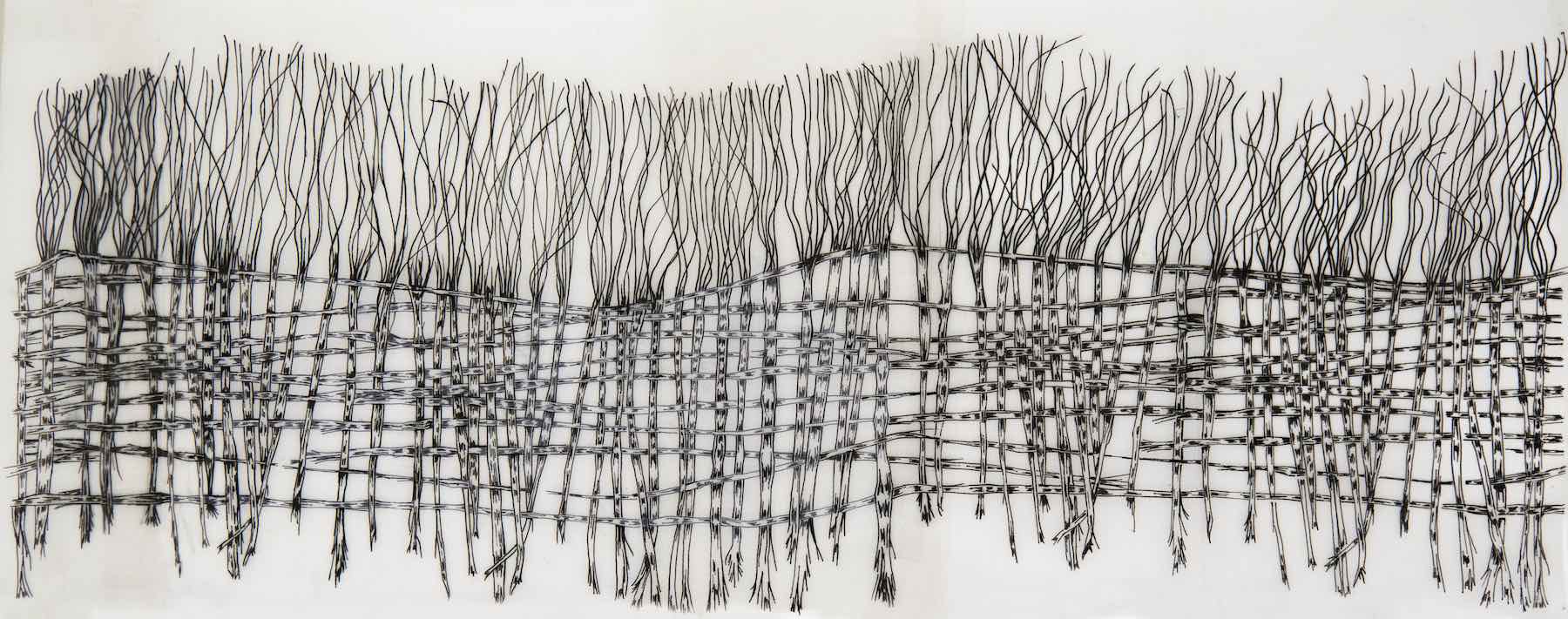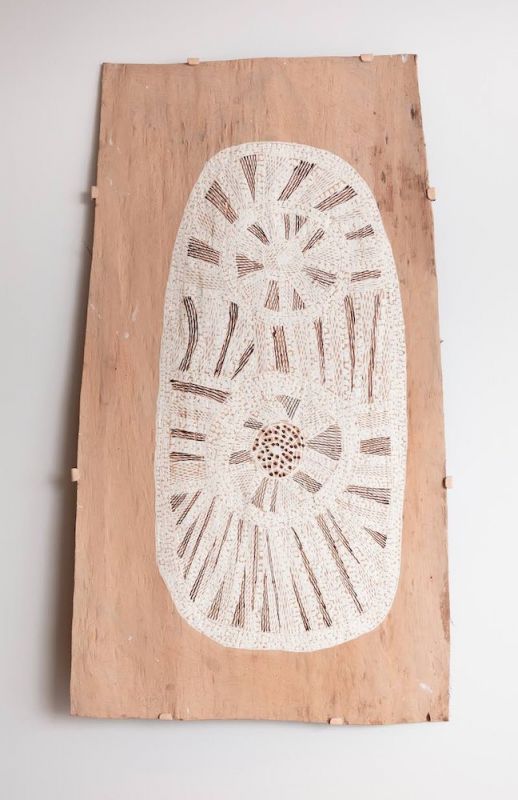
CCCSRI
Level 10
Mulkun Wirrpanda
Mulkun Wirrpanda (c.1947-2021) was a senior elder of the Dhudi-Djapu clan of the Dhuwa moiety.
Her early life was spent with her family living from the land and marking life’s process through ceremonial activity. She was an early pioneer of the Homeland Movement and spent all of her time in the remote homelands of Yilpara, Dhuruputjpi and Gängan in North East Arnhem Land. She had been making art since the 1980s and was a senior ceremonial authority. Her passion for the land and its law is being continued by her two daughters, Yalmakany and Gurrundul, who are both senior rangers, and her son, Borrak, who is a lawman.

Läwarr

Buḻwutja

Buḻwutja
This work is the latest extension of a phase which began when the artist of her own motion began exploring lesser known plant species which she feared were being forgotten by younger generations. This coincided with artist John Wolseley’s interest in returning to Yilpara (after the pair had met during the Djalkiri project of 2010) and the two spent an extended period exploring the botany of Blue Mud Bay. Mulkuṉ found new ways to paint and promote nutritional plants she ate as a child that are no longer eaten widely. As a child there were very many healthy old people and now there are few. In those days old people lived for a long time without illness. She blames poor diet and the loss of knowledge.
Following this theme she moved on to painting varieties of Maypal or shellfish and these were exhibited in a sold out show at Salon in Darwin in August 2018. This then morphed to a series of work where she painted shellfish which lived symbiotically with edible plants.
In 2019 Wolseley and Wirrpanda collaborated on a show at Australian Galleries where she explored extended ideas of maypal which definition includes some larvae which bore into wood.
In this work she has continued with the concept of symbioses and in this case eusociality. She has depicted the relationship between munyukuluŋu Magnetic termites Amitermes meridionalis, or compass termite, a species of eusocial insect in the family Termitidae. It is endemic to northern Australia and the common names derive from the fact that the wedge-shaped mound is aligned with its main axis running north and south and ŋäḏi, Northern Meat Ants, Iridomyrmex sanguineus.
Mulkuṉ painted these idiosyncratic termite mounds inhabited not by their makers but by their symbiotic partners the meat ant. This is an example of empirical observational Yolŋu knowledge. She paints it as common knowledge but an internet search reveals this to be scientific esoterica. When the harvest time comes it is common for women to gather large numbers of yams and to create a guṉdirr (ground oven) which is named after the fragments of termite mounds which would be placed on top of the large fire in a pit to retain the heat once it is covered with paperbark. This is the source of her knowledge.
The University of Newcastle acknowledges the traditional custodians of the lands within our footprint areas: Awabakal, Darkinjung, Biripai, Worimi, Wonnarua, and Eora Nations. We also pay respect to the wisdom of our Elders past and present.